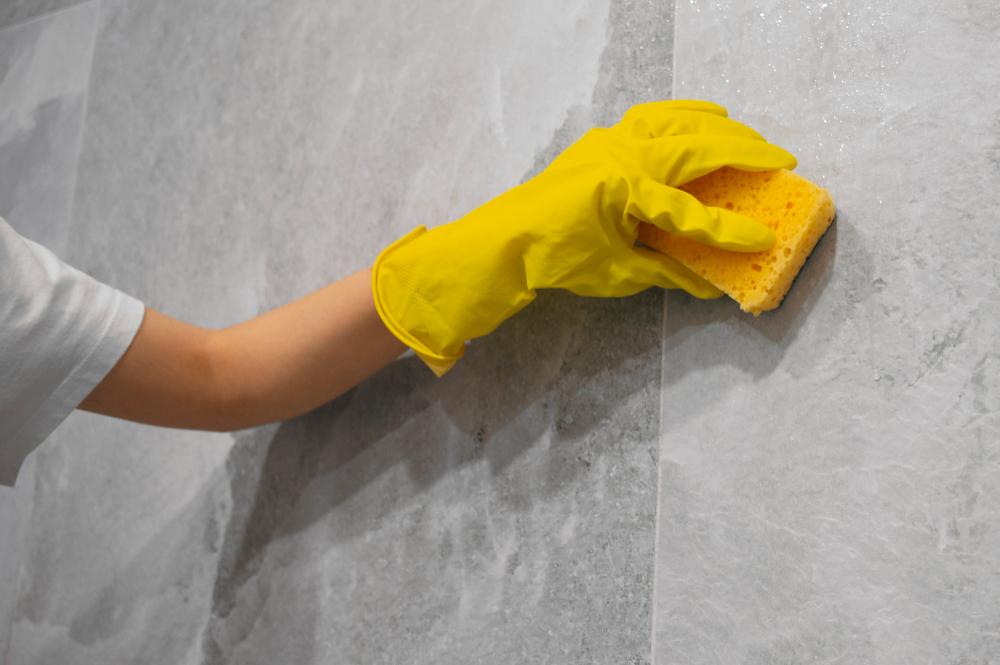Notifications

6 minutes, 41 seconds
-211 Views 0 Comments 0 Likes 0 Reviews

Achieving the correct grout mix ratio is crucial for ensuring strong and long-lasting tile installations. Whether working with cement-based grout, epoxy grout, or sanded vs. unsanded grout, the right mixture determines durability, adhesion, and appearance. This guide will cover how to mix grout, the ideal water-to-grout ratio, and expert tips for a flawless finish.
Grout is a cement-based or epoxy-based material used to fill gaps between tiles, providing structural integrity and preventing moisture penetration. If the is incorrect:
Too much water weakens the grout, leading to cracks and shrinkage.
Too little water results in a dry mix that’s difficult to apply.
Cement grout is the most common type, available in sanded and unsanded varieties.
Sanded grout (for wider joints): 1 part grout to 1.75 parts water.
Unsanded grout (for narrow joints): 1 part grout to 1.5 parts water.
Mixing Instructions:
Measure the grout powder and place it in a clean bucket.
Gradually add water while stirring to avoid lumps.
Let the mixture rest (slake) for 5–10 minutes.
Stir again before application.
Epoxy grout consists of resin, hardener, and filler powder. It’s resistant to stains and moisture, making it ideal for kitchens and bathrooms.
Standard ratio: Equal parts of resin and hardener, with filler powder added incrementally until a creamy consistency is reached.
Mixing process: Follow manufacturer guidelines as different brands have unique specifications.
For convenience, premixed grout eliminates the need for measuring and mixing. However, it’s typically more expensive and best suited for small-scale projects.
Grout powder
Clean mixing bucket
Measuring cup
Trowel or margin float
Drill with paddle attachment (for large batches)
Water or liquid additive (as per instructions)
Measure the dry grout accurately.
Slowly add water while stirring continuously.
Mix thoroughly to avoid lumps.
Check consistency—it should resemble peanut butter.
Rest the grout mix for 5-10 minutes to allow complete hydration.
Stir again before application to ensure uniform texture.
Spread grout using a float at a 45-degree angle.
Remove excess grout with a damp sponge after 15-30 minutes.
Final buffing with a dry cloth ensures a clean finish.
Adding Too Much Water
Leads to weaker grout that crumbles over time.
Solution: Stick to the recommended water ratio.
Not Mixing Thoroughly
Results in lumps and inconsistent texture.
Solution: Use a mixing drill for uniformity.
Skipping the Slaking Time
Affects strength and adhesion.
Solution: Allow 5-10 minutes of resting time.
Using Expired or Improperly Stored Grout
Old grout loses its bonding strength.
Solution: Always check expiration dates and store in a dry place.
Use distilled water to prevent impurities from affecting the mix.
Work in small batches to ensure fresh application.
Use a grout sealer after curing for added durability.
Keep a consistent application speed to maintain even drying.
Temperature and humidity play a significant role in grout curing. Ideal conditions include:
Temperature range: 50°F - 90°F (10°C - 32°C)
Humidity levels: Moderate to avoid premature drying
Highly porous tiles absorb more moisture, requiring more careful grout mixing and application.
Grout typically takes 24-72 hours to fully cure. Avoid foot traffic or moisture exposure during this period.
Use pigmented grout to match tiles.
Test a small area before full application.
Add a grout enhancer to improve flexibility.
Consider epoxy grout for high-moisture areas.
Epoxy grout is naturally stain-resistant.
Apply grout sealant to cement-based grout for added protection.
Grout should be smooth, thick, and peanut butter-like, neither too runny nor too stiff.
No, excessive water weakens the grout. Instead, mix smaller batches to work within the setting time.
Once mixed, grout remains usable for 30–45 minutes before it starts to harden.
If grout crumbles or doesn’t stick to the float, add a small amount of water and remix.
For enhanced strength and flexibility, some professionals use latex additives instead of water. Always follow manufacturer instructions.
Achieving the correct grout mix ratio is essential for a strong and long-lasting tile installation. By following precise water-to-grout ratios, allowing proper slaking time, and avoiding common mistakes, you can ensure a professional finish.

